Janakpurdham Explore
Tour Information
Booking Location
Trip Activity
Trip Type
Trip Grade
Accomodation
Trip Duration
Group Size
Best Season
Transport
JANAKPURDHAM EXPLORE (2 DAYS/ 1 NIGHT )
Overview:
This 2-day, 1-night package offers a rich blend of spiritual exploration and cultural immersion in Janakpurdham and Dhanushdham. Perfect for those looking to delve deeper into the historical and religious significance of the region, this itinerary combines guided sightseeing with moments for personal reflection and exploration.
This itinerary promises an enriching experience filled with spiritual insights, cultural exploration, and memorable moments in Janakpurdham and Dhanushdham!
Ancient Mithila
In today’s Janakpur, there was a kingdom called Videha. The kingdom was vast, stretching from the Himalayas in the north to the mighty Ganga River in the south, and from the Gandaki River in the west to the Koshi River in the east. The history of Janakpur spanned thousands of years, told (narrated) through folklore and religious texts rooted in Hinduism. The city of Mithila, the centre of the Videha kingdom (1100 BCE to 7th Century BCE), is now known as Janakpur.
Nimi was the first king of Videha. According to legend, he was born out of a product of churning (see details in page 19), which gave him the identity of “Janaka” Seeradhwaja Janak, the 21h King of Mithila, was the father of princess Sita.
Janakpurdham
Janakpurdham is the capital of Madhes Province and the erstwhile seat of the Mithila Kingdom once ruled by King Janak, the father of Sita who features in the Hindu epic, Ramayana. It is a popular destination for Hindu Pilgrimages, attracting visitors from across the subcontinent. It is a land of Mithila culture and art, with more than a hundred thousand people in the area still speak Maithili as their native tongue.
Today, Janakpurdham where Ram and Sita were married is celebrated as the symbol of divine love, virtue, and loyalty. The city is also frequented by newlyweds to make offerings for a happy marriage.
Legend has it that there were once more than 52 kutis (hermitage) and 72 kunds (sacred ponds) in Janakpurdham, some of which are still intact. The holy sites are visited by many sadhus in saffron robes who represent the city’s roots in Vaishnavism.
- Arrival: Greeted by a Super Trip representative at Janakpurdham Airport or Bus Stop and transferred to your hotel.
- Trip Briefing: Meet at the hotel for an overview of the itinerary.
Janakpurdham Explore
- Janaki Temple Darshan
- Ram Janaki Vibha Mandap
- Ram Temple /Rajdevi Temple
- Swarg Duwar/ Bhooth Nath Temple
- Ganga Sagar /Dhanush Sagar
- Ganga Aarti
- Janakpurdham City Tour
Evening: Free time to explore Janakpurdham at your leisure. Overnight stay at the hotel.
Early Morning: Meet with a Super Trip representative for a guided sightseeing tour.
Janakpurdham Explore
- Janaki Temple Darshan
- Railway Station
- Mani Mandap
- Bhat Bhateni Shopping Complex
Dhanausha Dham Darshan
- Parsuram Talu
- Shree Dhanush Temple
Train Safari : Short Distance : A Once-in-a-Lifetime Expedition with cultural magnificence.
- As the solitary cross-border railway route connecting Nepal with India, the Janakpurdham - Jaynagar Train Safari is renowned for its unparalleled distinction. This spectacular quest provides an opportunity for both tourists and natives to appreciate the charming Terai region and indulge in its cultural magnificence."
- Enjoy the evening on your won in Janakpurdhama and overnight at hotel
Departure: Transfer to Janakpurdham Airport or Bus Stop for your onward journey.
What is included
- Welcome with Janakpuriya Lassi / Matka Chai / Special Paan
- Pick up and Drop off
- Meals - Breakfast/ Lunch / Dinner
- Accommodation : Hotel
- All transportation for whole tour
- Tour guide As A Professional Driver
- All government tax and official expenses
- All mentioned sightseeing tours in Janakpurdham & Sindhuli.
What is excluded
- Personal Expenses
- Your travel insurance
- Airfare /Bus Ticket
- Entrance Fees
- Extra Activities
- Tips for Guide and Driver.(Not Compulsory)
- Any other items not mentioned in the head inclusions
DESCRIPTIONS
“Baban kutty Battarah pokhari, Matha-mandirsan sushobhit Janak Nagari”
Janakpurdham, also known as Janak Nagari, is home to 52 temples and 72 ponds of mythological significance.
Janaki Mandir
Janaki Temple is a holy site of Janakpurdham, a centre of attraction for tourists. The magnificent Baroque Mughal architecture temple is dedicated to Sita, the daughter of King Janak. The temple complex is surrounded by four corners adorned with domes and features the central Janaki Mahal, in the inner sanctuary where the divine idols of Sita and Ram are enshrined.
Legends say Sur Kishor Das, a saint who is said to have discovered Janakpurdham, found the image of Goddess Sita at the site of the current Janaki Temple. In 1727 AD, Manik Sen donated 1400 bighas (2338 acres) in the name of the Janaki temple. Later, Queen Vrishabhanu Kumari, wife of King Pratap Singh of Tikamgarh, India, expressed to Goddess Sita her desire to have a son. After having a son, she built this temple. The temple is also known as the Nau Lakha Mandir, which means that at that time, the temple was built for nine hundred thousand gold coins. The foundation was laid in 1894 AD, and construction was completed in 1911 AD.
The grand temple’s white facade is adorned with intricate lattice windows, domes, and verandas, resembling a majestic palace. It spans over 4800 square feet with 60 chambers. Adjacent to Janaki Mahal is the Janak-Sunaina Mandir, dedicated to the father and mother of goddess Sita. The temple conducts prayers twice daily, Mangal Aarti-between 8:00 AM and 9:30 AM and Sandhya Aarti- 6:30 PM and 8:00 PM. The inner sactum remained closed between 12:00 PM to 4:00 PM.
A small museum (entry fee: Rs 15) offers an immersive experience of Sita’s life through moving statutes.
Lakshman Temple
On the premises of Janaki Mandir, in the northeast corner, lies the Lakshman temple. The dome-style temple houses the idols of Lord Ram, Lakshman and Lavakush. Mahatma Sri Jayakrishna Das established the temple in the late 17th century. King Hem Karna Sen granted a gift of land to Lakshaman Mandir in 1753 AD.
Ram Janaki Vibaha Mandap
The temple next to the Janaki Mandir commemorates the marriage of Ram and Sita. The temple has a pagoda-style tiered roof, where the floor is marble. The walls are glass where you can see the idols of Sita and Ram at the centre of the temple, and the legendary wedding ceremony is depicted. Demigods are also seen on the pillars, who came to witness the great event.
It has statues of relatives from both the groom’s and bride’s sides on the temple’s pillars, within the four corners of Mandap. It was established in 1969 AD by King Birendra Bir Bikram Shahdev and officially inaugurated on Jan 2, 1986 AD. The auspicious wedding ceremony was observed in Mani Mandap.
Ram Temple
The Ram Mandir is a classic tiered pagoda-style temple that resembles the Pasupatinath temple (located in Kathmandu) in its appearance, Built by Amar Singh Thapa in 1782 AD, in dedication to Ram, the prince of Ayodhya. The Ram Mandir is about 5-minute walk from Janaki Mandir, right opposite Dhanusagar.
The main temple is dedicated to Ram, but there are several smaller shrines to Shiva and Hanuman. The temple houses several idols, including Panchayan, Lakshminarayan, Vishnu Dashavatar and Surya god sitting on a seven-horse chariot. These idols were discovered by Chaturbhuj Giri in the end of 17th century while exploring the land of Mithila, making the temple an important historical site.
Within the temple premises are 18 shivlingas, known as the Navagrahadi. The main festivals celebrated in Ram Mandir are Ram Navami and Vivah Panchami. As Ram Navami is the birth tithi (date) of Ram, special bhajans are sung on the day. On Vivah Panchami, some special traditional codes are performed between Ram Mandir and Janaki Mandir as marriage codes to be followed.
Rajdevi Temple
Rajdevi Temple is one of the most famous temples of Janakpurdham. It lies on the north side of Ram Mandir, in the same compound. The Rajdevi god is the patron deity of King Janak, namely Rajeshwari. The temple is worth visiting during Dashain.
Several devotees from Nepal and India came here every year to take the blessings of Rajdevi Mata during the Durga Puja / Dashain festival . At this time, local clubs make arrangements for the rituals. More than 15000+ goats are sacrificed yearly during this Asthami night (Kal Ratri).
Swargdwar
It is located at the west bank of Gangasagar. Swargdwari means Swarg (The Heaven) and Dwar (gate). So, this place is considered as a gate to heaven for the dead people. This place is also crematorium (samsanghat).
Bhootnath Temple
Bhootnath Temple is located in the southern part of the Gangasagar. It is also called Swargdwari of Janakpurdham. Shiva Parvati statue, shankha ghanta, Kaal Bhairav mandir is visible in this temple. This temple is 345 ft in length and 125 ft wide. This place looks like a very beautiful garden with diversity of flowers and trees.
Ganga Sagar
To the northeast of Janaki Mandir, close to Janak Mandir, lies the Ganga Sagar which is the most holy pond in Janakpurdham. Thousands of devotees bathe and splash their faces in this holy river. Every evening, a special Aarti dedicated to Ram and Sita is performed in the pond premises.It is beautifully decorated during Chhath festival. Visitors can also enjoy a boat ride on the pond, even during the Ganga aarti time. This pond looks magical at night time.
“According to local mythology, the historic Gangasagar has an exciting story. During the Treta Yug, King Nimi of the Ikshavaku dynasty wanted to conduct a maha yagya (a grand sacrifice/devotion) to ensure the prosperity of his reign. He had initially invited the respected Maharishi Vashishta, who at the time was occupied with another yagya, the Indra yagya. Although the Maharishi had requested King Nimi to wait, the king proceeded with the yagya with ascetic Gautama. This act of disobedience incurred the wrath of Maharishi Vashishta, who cursed King Nimi, “May your body be burnt to ashes.” The other priests present at the yagya bathed Nimi’s lifeless body in sacred water from Gangasagar. A new body emerged, which they named ‘Mithi’. Therefore, this pond is regarded as the most significant and famous pond in Janakpurdham.”
There’s Janak Mandir, Bhuthnath (Swargadwari) temple around its periphery.
Ganga Aarti
Every evening, on the north-west bank of Ganga Sagar, devotees gather to witness the Sandhya Mahaganga Aarti. It was started in 2014 AD. There are three sacred mandaps (pavilions), each with a priest who offers blessings with burning incense and lighting oil lamps in a musical harmony. One of these mandaps is dedicated to Mahadev, another to the mighty Ganga, and the third to Sita and Ram. The ritual makes the evening environment dazzling. At the end of Aarti, prasad is distributed to the visitors.There is a belief that if you participate in Ganga Aarti, you will be forgiven for the mistakes and your wishes will be fulfilled. This is one of the most-do activities while visiting Janakpurdham.
Dhanush Sagar
In front of Ram Mandir lies a pond called Dhanush Sagar, which narrates the tales from the Treta Yug. During the Swayamvar, Ram broke the Shivadhanush (the divine bow of Lord Shiva) into three pieces, and one of the broken pieces created Dhanush Sagar, which turned into a religious place for the Hindus.
Visitors can see several small shrines around the perimeter and vendors selling flowers and other ritual objects for puja. Taking a bath at the ghat is considered sacred by the devotees. Locals say a reflection of the Shivadhanush can be seen if one is pure or worthy.
Janakpurdham City Tour
Janakpurdham Sub-Metropolitan City is situated in Dhanusa District of Madhesh Province inthe southern region of Nepal. Formerly, it was established as Janakpur Sub-metropolitan Cityon 1960. Later on 2014, it was re-named as Janakpurdham and changed the sub-metropolitan city to sub-metropolitan city. It is divided into 25 wards. Janakpurdham Sub-Metropolitan City has a total population of 194,556 as per the national population and housing census conducted in 2021.
Janakpurdham, which is often called the cultural center of Nepal, is a treasure trove of Maithili culture. Maithili is an ancient culture with rich art forms and a deeply spiritual way of life. This section is meant to give readers a deep look into the traditional way of life in the Maithili community, which is part of the region’s rich cultural history.
From the beautiful architecture of the Janaki Temple to the mesmerizing Mithila paintings that decorate the city, Janakpurdham is a treasure trove for people who want to live in a place where the past and the present seamlessly blend together. The delicious food is a combination of old recipes and local tastes that will stay with you for a long time.
Nepal’s one of the most big and old silver & Gold- Jewellery market; Whether you are looking for traditional artifacts, textiles, or handmade crafts, Janakpurdham offers a variety of markets and shopping areas that cater to different tastes and preferences. Here are some popular spots to add to your shopping itinerary.
As we reflect on our journey through the busy streets, landmarks, and peaceful temples of Janakpurdham, it feels like we’ve stepped into a live canvas that illustrates the rich tapestry of culture, history, and spirituality that this city holds. The famous Janaki Temple that is located in the center of the city is a landmark with a rich cultural heritage that has something to offer for everyone.It is an ideal destination for pilgrims, art connoisseurs, and newlyweds.
Janakpurdham Explore
Mani Mandap
In ancient legends, it is said that Ram and Sita united in the sacred marriage ceremony at the Mani Mandap. The Maithili tradition involves the customary making of Madwa during the marriage rite, which can be observed here. This historical place is believed to be the actual site of Ram Janaki Vibaha. The Mandap was called Mani Mandap since it was decorated with precious “mani” jewels. It is surrounded by three serene lakes, with one situated in front of Mani Mandap. This lake holds a special place as it is believed to be the spot where Ram washed his hands after putting sindoor (a red powder that women adorn after marriage) to Sita’s forehead.
Mani Mandap, Goddess Ram, and Sita celebrate their wedding. It is the hidden gem of the Janakpur Dham tour and this temple lies about 3 km north of the main Janaki temple of Janakpurdham. This place was also known as Rani Bazar.It welcomes newly-wed couples to celebrate, embrace, and be blessed from the epic love story of Ram and Sita.
Bhat Bhateni Shopping Complex
Bhat Bhateni Super Market has launched its 25th branch in Madhes Province’s capital Janakpurdham. As Nepal’s largest retail chain, Bhat-Bhateni offers a range of 150,000 products of the highest quality, for the best prices. Enjoying shopping with multi national companies brands in one roof as feeling comfort like as international super market .
Dhanusha Dham Darshan
Mithila Bihari Temple
The Mithila Bihari Mandir temple features dome architecture, colourful, vibrant designs, and whitish walls. It is on the way to Dhanushadham in the Kachuridham of Mithila Bihari Municipality. This temple holds great religious importance as it marks the carrying of Ram’s dola (palanquin) for the starting of Mithila Madhya Parikrama.
Parshuram Talau
Parashuram Lake is a pond where Maharishi Parashuram performed penance to repress his anger after learning that Ram was successful in breaking the Shivadhanush. According to legends, Lord Shiva entrusted the protection of his bak Maharishi Parashuram. Since then, this site has become a place of worship shop Parashuram Talau. It is located on the way to Dhanushadham at Purandaha.
At the pond’s entrance, there’s a tempre dedicated to Goddess Sita and another housing a Shivalinga. A well-constructed pathway extends through the middle of the pond, offering a peaceful walk amidst the tranquil surroundings. At the end of it stood a Shivalinga adorned by a vast naga (a snake), complemented by an artistic painting.A concrete snake structure and a nearly 20 foot high shiva idol is in between the pond.
Dhanush Temple
The place where the broken remains of the divine Shiva bow fell after Ram broke it to obtain Sita’s hand in marriage. A fossilized fragment of the broken piece is still believed to be present here. Every Sunday in the month of Magh (January/ February), a Makar Mela takes place – a tradition that has been continued since Vedic times. Tens of thousands Hindu devotees from around the world flock here to pay homage to this place.
Towards the south is a beautiful Ram Mandir temple with a dome structure and red walls. There is also Dhanush Sagar at the entrance of Dhanush Mandir.
Train Safari : Janakpur – Jayanagar Railway
The Janakpur-Jayanagar Railway is the first cross-border railway between Nepal and India. In 2023, the railway service was extended from Bhangaha to Jayanagar, covering a stretch of 52 km. The history of Janakpur-Jayanagar dates back to 1927, during the reign of Chandra Shumsher Rana, when the railroad was first laid as a cargo line to transport timber from Nepal to India.Jaynagar–Janakpurdham–Bardibas railway line is a cross-border railway line between India and Nepal.It is the only operational railway line in Nepal.
The railway has provided a convenient means for thousands of devotees from India to visit the land of Mithila on different occasions, it offers gisrases of people’s lifestyles and scenic landscapes, from Bhangaha to the historic attraction of Jayanagar, reflecting the shared heritage of Nepal and India.
WOW Factors :
Connection :Sita Marriage with Shiv Dhanush (Divine Bow)
“Sita had a phenomenal talent from childhood. Once, King Janak saw his daughter Sita was effortlessly lifting the Shiva Dhanush while cleaning the shrine in the palace. Seeing that Sita lifted the bow easily, Janak decided to marry his daughter to whoever could lift this bow.”
It is believed that the divine bow, left in Janakpur by Shiva himself thousands of years earlier, was so powerful that whoever held it made gods tremble. Among many kings and princes who lacked the strength to lift the bow, Ram Chandra, the crown prince of Ayodhya, the seventh incarnation of the God Vishnu, lifted it up without any difficulty. However, as he was stringing it, the bow broke into three pieces. One piece ascended to heaven (Rameshwaram); a second piece sank to hell (Dhanush Sagar); and a third piece remained upon the face of the earth in Mithila (Dhanushadham).
Mithila Art
Women in the Mithila region have been practising their own rites and rituals for centuries-one of their key niche includes making floor and wall paintings. Over time, this art form became known as Mithila Art. Local folklore has it that Mithila Art originated during the wedding of Ram and Sita. It is said that King Janak requested women in the region to paint the city with vibrant art on the walls everywhere.
Mithila Art is unique as it symbolically sies stories of human values, tradition, culture, and religion through paintings these paintings often depict stories of mythology, folk dances, and folklore, which can be seen across the walls of the Janaki Mandir. The symbolic significance of Mithila Art includes the elephant, horse, and palanquin, which symbolize royalty and richness; the sun and moon, which represent long life; the goose and peacock, which suggest welfare; and the betel leaf, lotus, and peacock, which embody purity and innocence.
Mithila Art is a vibrant art form that uses meaningful images, icons, and motifs to express ideas through symbols and colours. Nowadays, it is not just limited to religious rituals and cultural heritage but also serves as a growing art community to tell stories of contemporary social issues in the form of art.
Places to buy Mithila Art
| S.No. | Organization | Address | Contact No. |
| 1 | Janakpur Women Development Centre | Kuwa, Janakpur | 980-7535550 |
| 2 | Sunaina Mithila Art Gallery | Janaki Mandir | 981-9812174 |
| 3 | Mithila Art Center Janakpur | Parshuram Marg, Janakpur | 980-7893281 |
| 4 | Mithilani Ghar Mithila Art Gallery | Janaki Mandir Marg | 981-4830580 |
Mithila Madhya Parikrama
The Mithila Madhya Parikrama is an annual journey that covers the central part of the ancient Mithila with fifteen sacred destinations. It is held annually during the Hindu calendar month of Falgun (Feb/March) and covers a distance of 133 km circumambulation. It starts on the day of amavasya (no moon day) in Falgun and ends on the day of Holi (Purnima/full moon day), totalling a fifteen-days trip. Once every five years, it is organized with huge fanfare, but people can take it as an annual journey every year.
Apart from Mithila Madhya Parikrama, there are two other Parikrama according to the Mithila Mahatmya- namely the Brihat Mithila Parikrama and Antargriha Parikrama. Brihat Mithila Parikrama covers an area of 84 kosh (126 kms approx.) of ancient Mithila. At the same time, Antargriha Parikrama is the internal circumambulation of Janakpur that covers an 8 km circular path around the city during the day of the Hindu festival Holi.
It is said that Mithila Parikrama started earlier in the 18th century, as mentioned in the book “Mithila Mahatmya”.
The Mithila Madhya Parikrama is a 15-day pilgrimage that takes devotees to various religiously shrines in the Mithila region associated with the Ramayana. It occurs barefoot, resting at fifteen different spots, chanting mantras and bhajans (hymns) and reciting stories of Ram-Sita.
Annual Events & Festivals
Most of the Hindu festivals are determined based on position of the Sun and the Moon. Many Hindu festivals are celebrated while keeping a day-long fast on the festival day. Hence in Hinduism Tyohar (s) is time for celebrations, deity worship and austerity. More than 50 festival held on one year in Janakpurdham :
| S.No. | Festivals | Held On. | Summary |
| 1 | MithilaNewYear / Nepali New Year | April | Satuain festival & Judsheetal festival |
| 2 | JanakiNawami/ Sita Nawami
|
May-Jun | Celebrates birthday on Janaki Nawami |
| 3 | Jitya Festival
|
Sep-Oct | Women fast for her child & husband long life |
| 4 | Dashain | Oct-Nov | Janaki temple, the idols of Ram and Sita are taken out of the temple and worshipped with betel, makhana and batasa. |
| 5 | Deepawali | Oct-Nov | Glowed with joy as devotees celebrated Diwali with Deepotsav, illuminating the city with countless lamps. |
| 6 | Chhath
|
Oct-Nov | Chhath festival splendidly, making offers to the sun god Surya and his sister Chhatimaiya, Chhath Puja is celebrated six days after Deepawali. |
| 7 | Sama-Chakewa
|
Nov | It is the festival that celebrates the love between brothers and sisters. |
| 8 | Bibaha Panchami
|
Nov-Dec | The festival’s centre of attraction is the Janaki Mandir, where devotees offer garlands and worship the union of Ram and Sita. |
| 9 | Holi | Mar-Apr | People enjoy playing during the Holi festival by throwing coloured water at each other and painting each other’s faces with different powder colour. |
| 10 | Ram Navami | Cerebration of Ram’s birthday in Ram Mandir |
DANCES
Based on folk music and tradition, various dances are performed across several religious occasions in Janakpur. These dances are performed on multiple auspicious and religious festivities, singing devotional and joyful music. The dances have evolved from the inner rhythm of the people’s hearts.
| S.No. | Dance | Held On | Summary |
| 1 | Jhi-Jhiya | Oct-Nov | Devoted to the Goddess Durga, during the Dashain festival |
| 2 | Jat-Jatin | Performing this dance is said to bring a good season of rain. | |
| 3 | Sama Chakeba | Oct-Nov | This is a play performed by the rural women of Mithilanchal for a fortnight, starting on Chhath |
| 4 | Jharri | Celebration commemorating Lord Hanuman’s flag and ‘Daha’ or ‘Tajiya’ (Muslim rituals) | |
| 5 | Lokasankirtan (Devotional songs) | There are four types of Loka Sankirtans:
a) General Loka Sankirtan b) Jhanki Loka Sankirtan c) Bishaya Sankirtan d) Jhanki Vivah Sankirtan |
|
| 6 | Leelas (episodes from the lives of gods) | There are many types of leelas :
a) Ram Leela b) Krishna Leela c) Ras Leela d) Shiv Leela |
FOLK DANCES AND DRAMAS
Mithilanchal has been the centre of folk dances and dramas since the 5th century. It is said that in birth, life and death, music never abandons a person in Mithilanchal. Some of the ancient dances are the Badhaiya Nach, Pamariya Nach -both of which are performed within a month of birth – Chhaukarbaji Nach and Ras Nach.
Among the folk dramas, the most ancient are Salhesh, Gopichan, Bharthari (Bratihari), Saranga-Sadabriksh, Mahasti Bihula, Bideshiya, Hirani-Birani, Dulara Dayal, Naika-Banijara and Domakacha. These folk dramas have been handed down through word of mouth.
Besides these dramas, there are Nautankis (light dramas) which are heroic presentations. Among them are Amar Singh Rathour, Laila-Majnu and Shiri- Farhad. These Nautankis performed on stage are accompanied by music played on one big drum, three small drums along with the harmonium and other musical instruments.
FOOD
Mithila is rich in food culture and offers delightful delicacies and specialities There’s a saying “Machha (Fish), paan (Betel) and makhana (water-lily seed) (Makhana) are the soul of Mithila”; this reflects the significance food in the local cuisine.
Fried fish is one of the popular dishes here. The city of ponds ensures a ready supply of fresh fish. It is considered a symbol of luck and holds religious and cultural importance. In every festival, fish is the cornerstone of the specialties prepared for the guests and themselves.
Paan is a treat consumed during auspicious occasions. It is more than just a food item, that act of giving and sharing paan is a cultural practise. You can find hundreds of paan shops offering varieties of flavours in the city.
Makhana is considered a very pure ingredient and often used as an offering to God. There’s also a ritual where they use Makhana as a gardland while welcoming guests. Makhana, the seed of the lotus flower is taken out of water and dried in the sun and then fried to a make it eatable. You will find multiple stalls across all temples selling makhana.
Besides these, the Mithila Thaali set typically includes, rice, kadhi bari, alu chokha, alu bhujiya, taruwa, tilauri fulauri, and vegetables. The wholesome meal showcases the diversity of flavors and textures in Mithila cuisine.
Janakpurdham FAQs
What is Janakpurdham famous for?
Janakpur, also known as Janakpurdham, is renowned for its rich cultural heritage, historical significance, and religious landmarks. It is famous for the Janaki Mandir, a historic Hindu temple dedicated to Goddess Sita. The city is also known for its vibrant Mithila paintings and the annual celebrations of festivals like Vivah Panchami and Chhath Puja.
How to reach Janakpurdham ?
Janakpur is easily accessible by road, train, or flight, and is located just few kilometers from the Indian border with Bihar.
By Air
From Kathmandu :
Catch a quick flight from the Tribhuvan International Airport in Kathmandu to Janakpur. Major domestic airlines like Buddha Air, Shree Airlines, and Yeti Air offer regular 30-minute flights between 7:30 AM and 6:30 PM. Making flying a convenient and time- saving option.
From India :
Bihar State have 2 Airport which is also few hours far from Janakpurdham.
- Darbhanga Airport – 2 hr 30 min (80.5 km) via NH 105/NH 527B
- Patna Airport 6 hrs (186.7 km) via NH22
By Train
Jayanagar Railway Station and Sitamarhi Railway Station are located only 30 and 45 km away from Janakpurdham Railway Station respectively and were the only connecting railway lines between India and Nepal .The city of Janakpurdham is the only region in Nepal that has a connecting railway line to India.Jayanagar Railway Station – Janakpurdham Railway Station (approx 28 KM via Rail) / Jayanagar- Jathi- Janakpurdham ( approx 35 KM via road) and Sitamarhi-Bhitamode-Janakpaurdham ( approx 45 KM via road) are two of the closest border cities and are connected to a number of major cities in India. People can catch a train to these cities from anywhere in India and cover the rest of the journey to Janakpurdham via road
By Road
Buses depart from Kathmandu Janakpur every one to two hours morning and evening. Tickets can be easily purchased from online and ticketing platforms, or at the bus stop itself.
From Kathmandu (Nepal) :
From Kathmandu many ways to reach Janakpurdham but 2 high way is most popular to reach.
*Kathmandu>Janakpur: 387 km via Mahendra highway
(Kathmandu-Naryanghat-Munglin-Chitwan-Bardiwas-Janakpurdham)Traveling Time: 8-10 Hrs
*Kathmandu>Janakpur:223km vai BP Highway
(Kathmandu-Sindhuli-Bardibas-Dhalkebar -Janakpurdham) Traveling Times : 5-6 Hours
This road passes through several hills, rivers, forests, and villages. Of course, you can enjoy stunning views of green hills and mountains. Moreover, it contains some viewpoints (Selfie Danda) where you can capture beautiful nature scenes with attractive road bends.
From India & Nepal Boarder
Jayanagar- Jathi- Janakpurdham ( approx 35 KM via road) and Sitamarhi-Bhitamode-Janakpaurdham ( approx 45 KM via road) are two of the closest border cities and are connected to a number of major cities in India. People can catch a train to these cities from anywhere in India and cover the rest of the journey to Janakpurdham via road .
* Delhi (Capital of India) > Kathmandu (Capital of Nepal) :1140 Km /Traveling Time 22-25 Hrs
* Delhi (Capital of India) > Janakpurdham : 1126 Km /Traveling Time 20-24 Hrs
*Patna (Capital City of Bihar) > Janakpurdham: 209.3 Km
(Patna-Mazaffarpur-Sitamarhi-Bhitamode-Janakpurdham ) / Traveling Time 5-6 Hrs
*Ayodhya > Janakpur: 586.2 km / Traveling Time 10-12 Hrs
*Varanasi > Janakpur: 436.2 km / Traveling Time 9-10 Hrs
What are the main attractions in Janakpurdham?
Things to See and Do
- Boating on Ganga Sagar / Dhanusha Sagar
- Visit Janaki Temple Museum
- Visit Bibhamandap Park
- Rail Safari- Bhangaha – Janakpurdham- Jaynagar (India)
- Visit Mithila Art Gallery- Hand Craft / Mithila Painting
- Morning Prayers: To Connect heart & soul with divine power on Temples, Ganga Sagar Dhanush Sagar
- Ganga Aarti: Experience the divine Ganga Aarti (prayer ceremony) at the ghats of Ganga Sagar, a spiritual rendezvous that leaves an everlasting impression.
- Spiritual Dip: Participate in the age-old tradition of taking a dip in the holy waters, especially during festivals and special occasions.
- Shopping : Janakpurdham is known for its vibrant shopping scene. The city is home to a variety of shops, from traditional markets to modern department stores and International standard shopping complex.
- Enjoying with mithila cultural , delicious mithila food and beverage.
Why do people go to Janakpurdham?
Significance in Nepalese Culture and Hindu Mythology
In Hindu mythology, Janakpur is considered sacred because it is where Goddess Sita, also known as Janaki, was born. Lord Rama, who was an incarnation of Lord Vishnu, got married to Sita here in a grand ceremony.
What is the best time to visit Janakpurdham?
The best time to visit Janakpur is between October and April when the weather is pleasant and clear, making it ideal for sightseeing and exploring the city. This period also coincides with several vibrant festivals likeVivah Panchami, Ram Naomi, Holi (Festival of Color) & Holi Parikarma,Jitiya,Sama-Chakewa, Dashain, Dipawali & Chhath that are celebrated with great fervor in the city.
Can I find good accommodation options in Janakpurdham?
Yes, Janakpurdham offers a variety of accommodation options ranging from hotels and lodges to homestays and guesthouses. Depending on your preference and budget, you can choose from a range of places that offer a comfortable and memorable stay.
What to buy in Janakpurdham?
Shopping for indigenous Mithila painting is the perfect souvenir to take home with you. A lot of other culturally iconic crafts like clay pottery, handmade clothes, bamboo baskets and a host of other locally made products make for some of the best kind of gifts and keepsakes.
Is Janakpurdham safe for tourists?
Yes, Janakpurdham is generally considered safe for tourists. However, like any other tourist destination, it is advisable to take standard precautions, be aware of your surroundings, and adhere to local guidelines and advisories to ensure a safe and enjoyable trip.
As we share this thought, we want to encourage everyone to visit Janakpurdham and witness for themselves how warm, lively, and spiritual this beautiful city is. It’s not just a trip; it’s a journey full of experiences that enrich your soul and leave a mark on your heart.
So, pack your bags and set out on a journey to Janakpurdham, where stories from ancient scriptures come to life, art speaks the language of the soul, and every street corner has a story to tell. Come be a part of Janakpurdham’s fascinating tale and create your own story of adventure, discovery, and spiritual awakening.
MUST VISIT ONCE IN A LIFE TIME











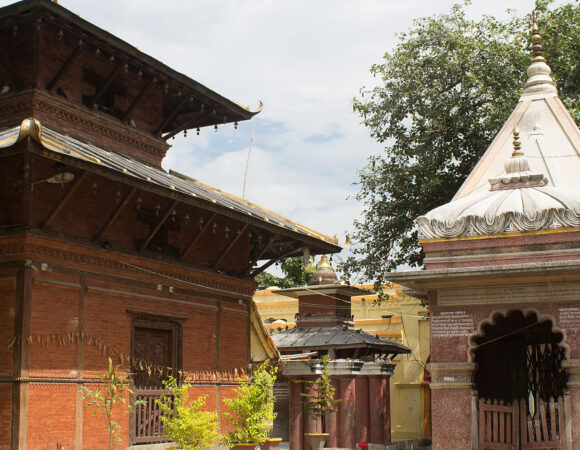
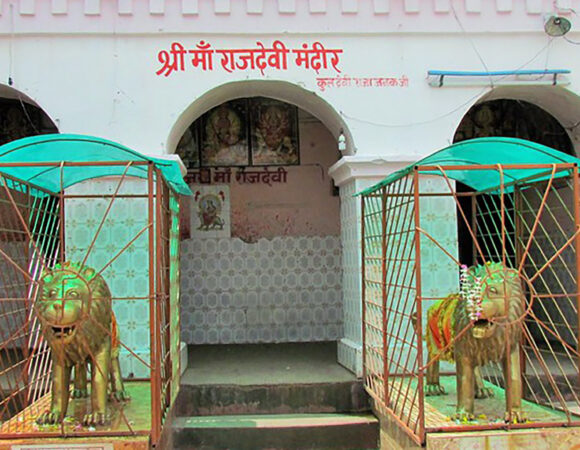
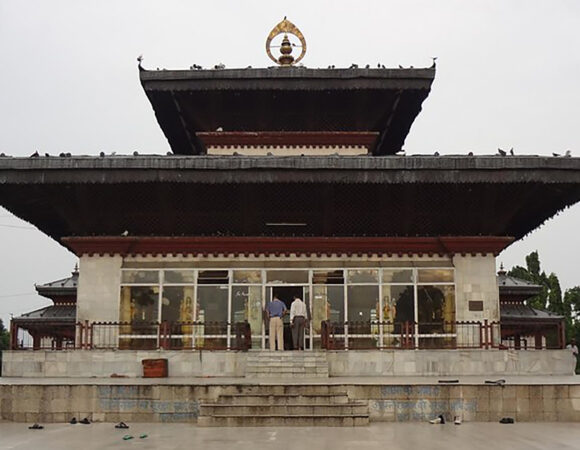


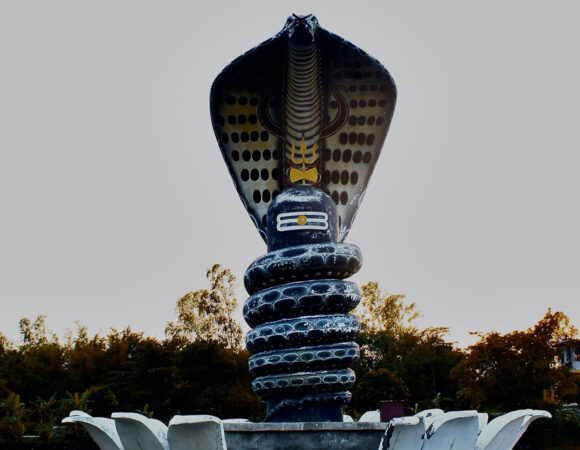
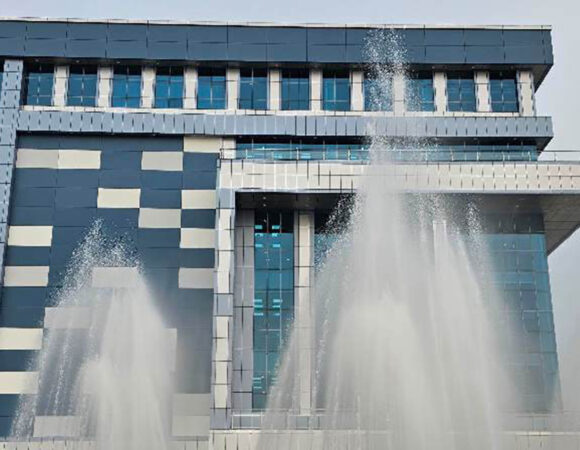
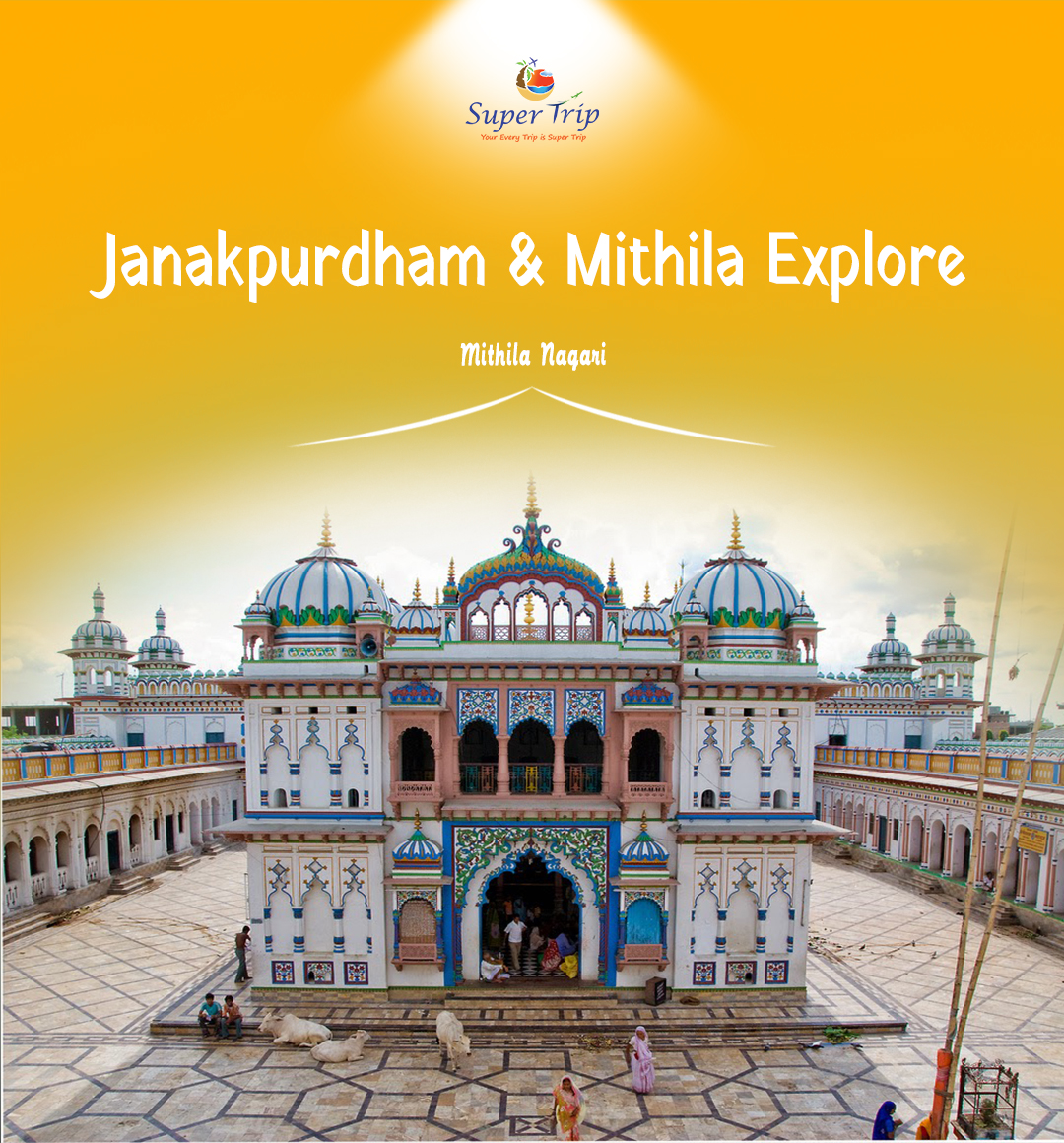

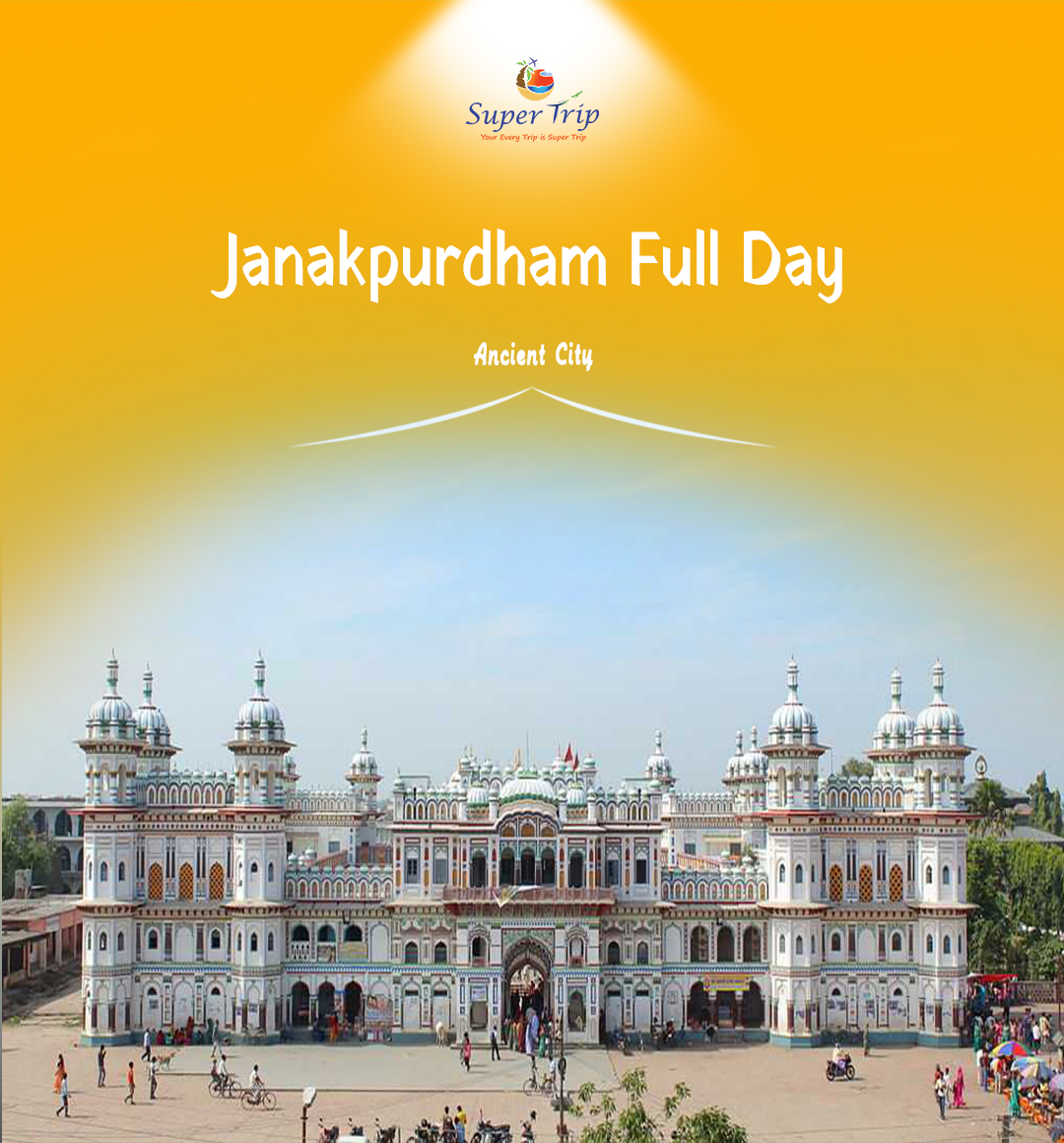
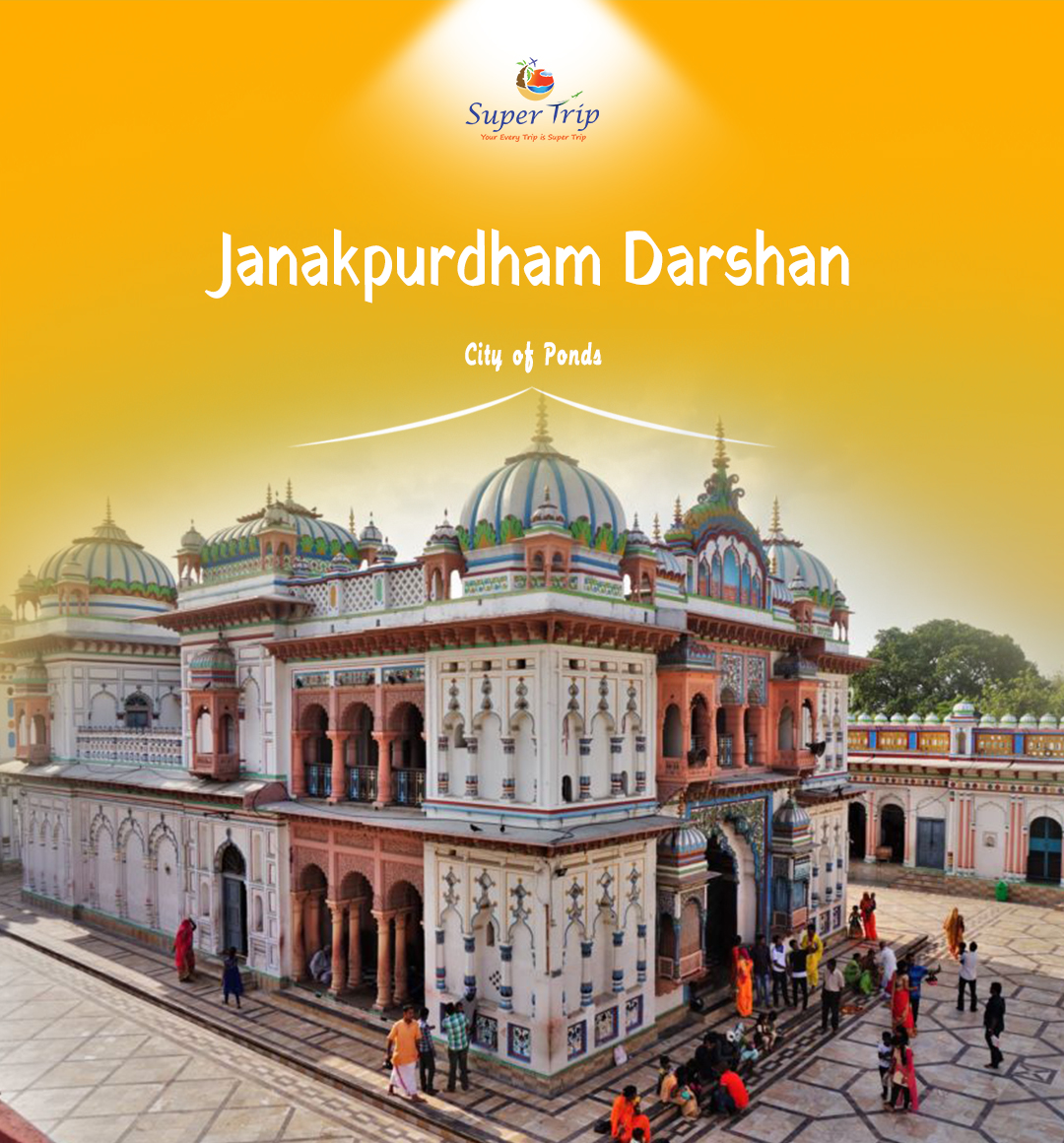
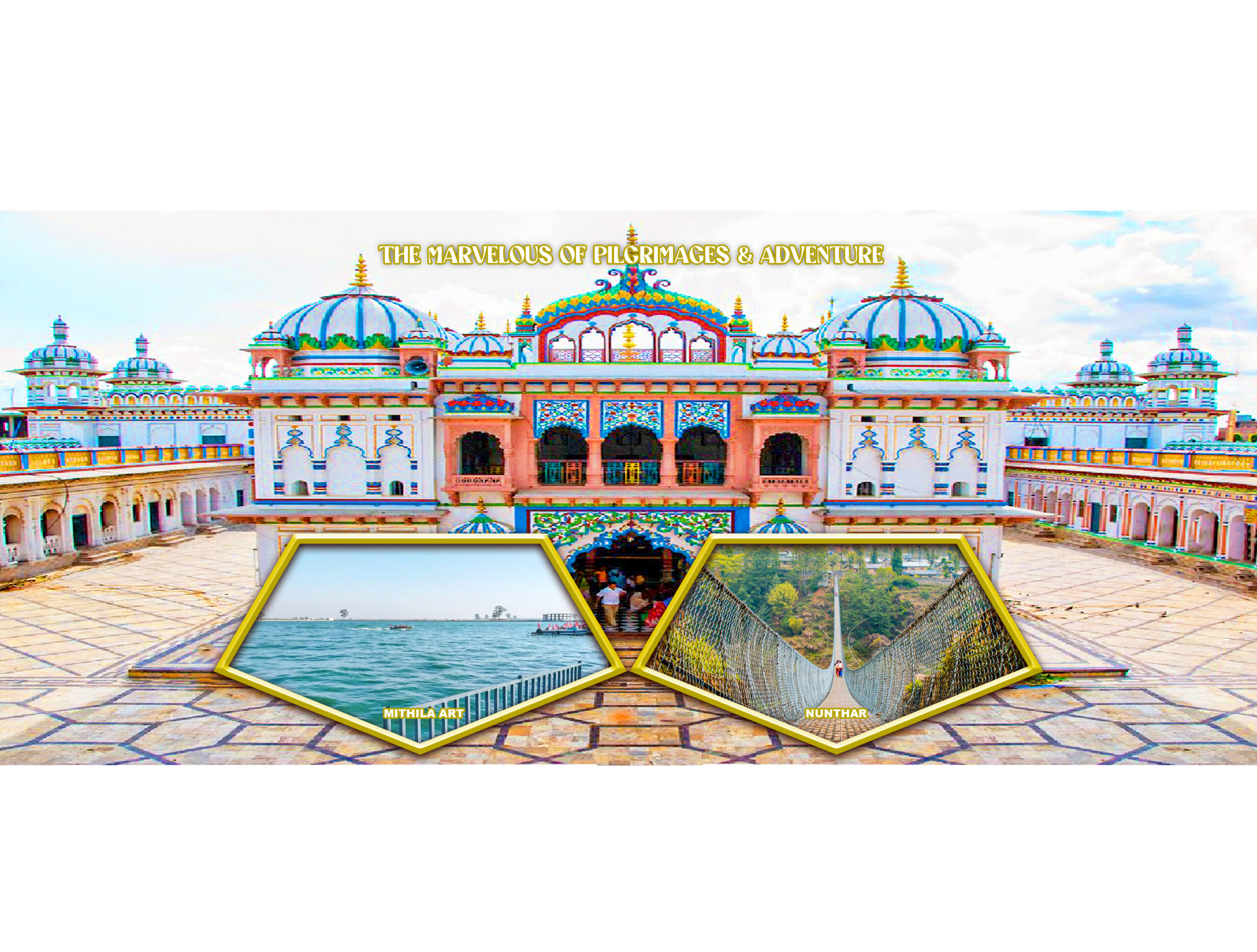
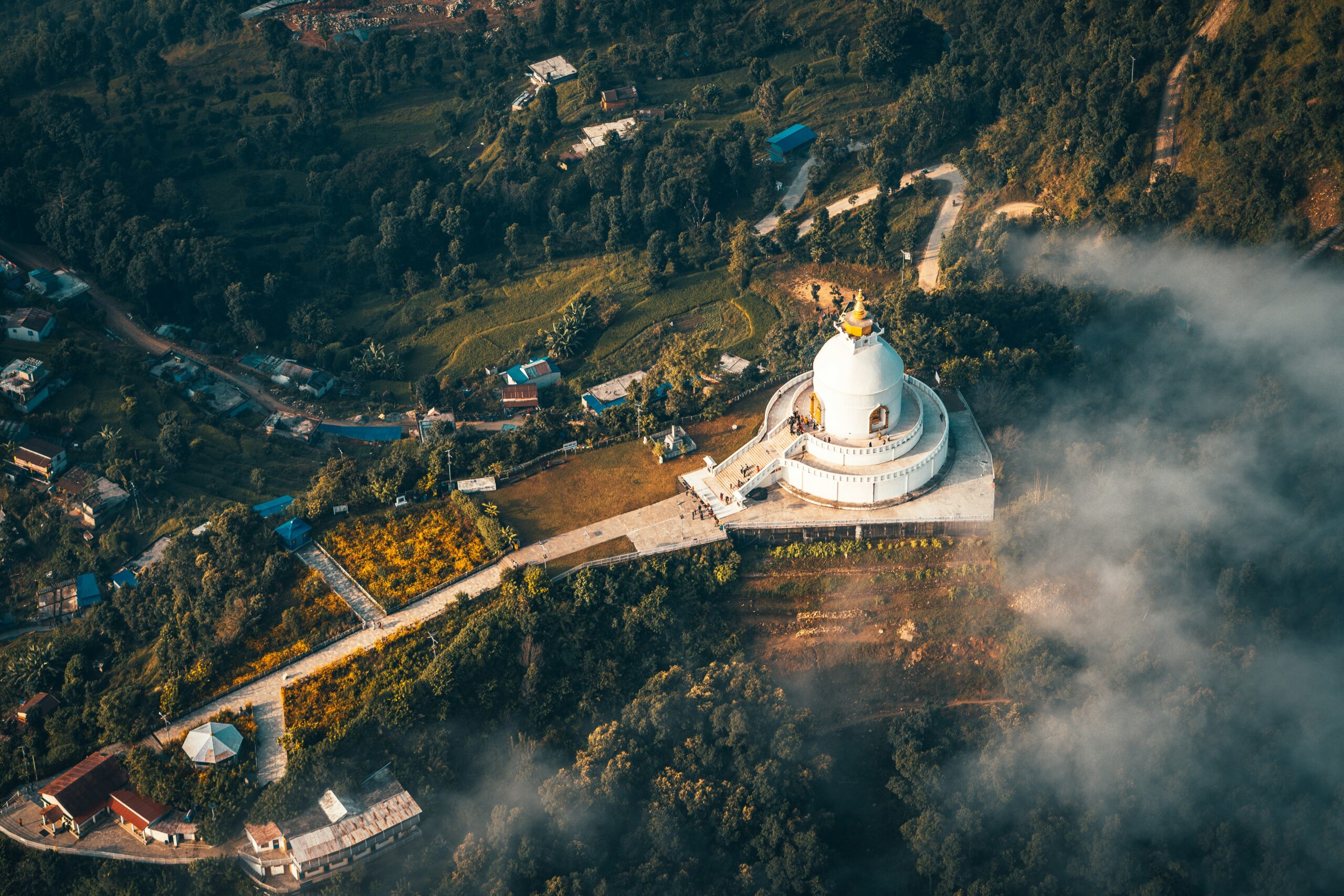
5
I was looking through some of your posts on this site and I conceive this internet site is really informative!
Keep posting.Leadership